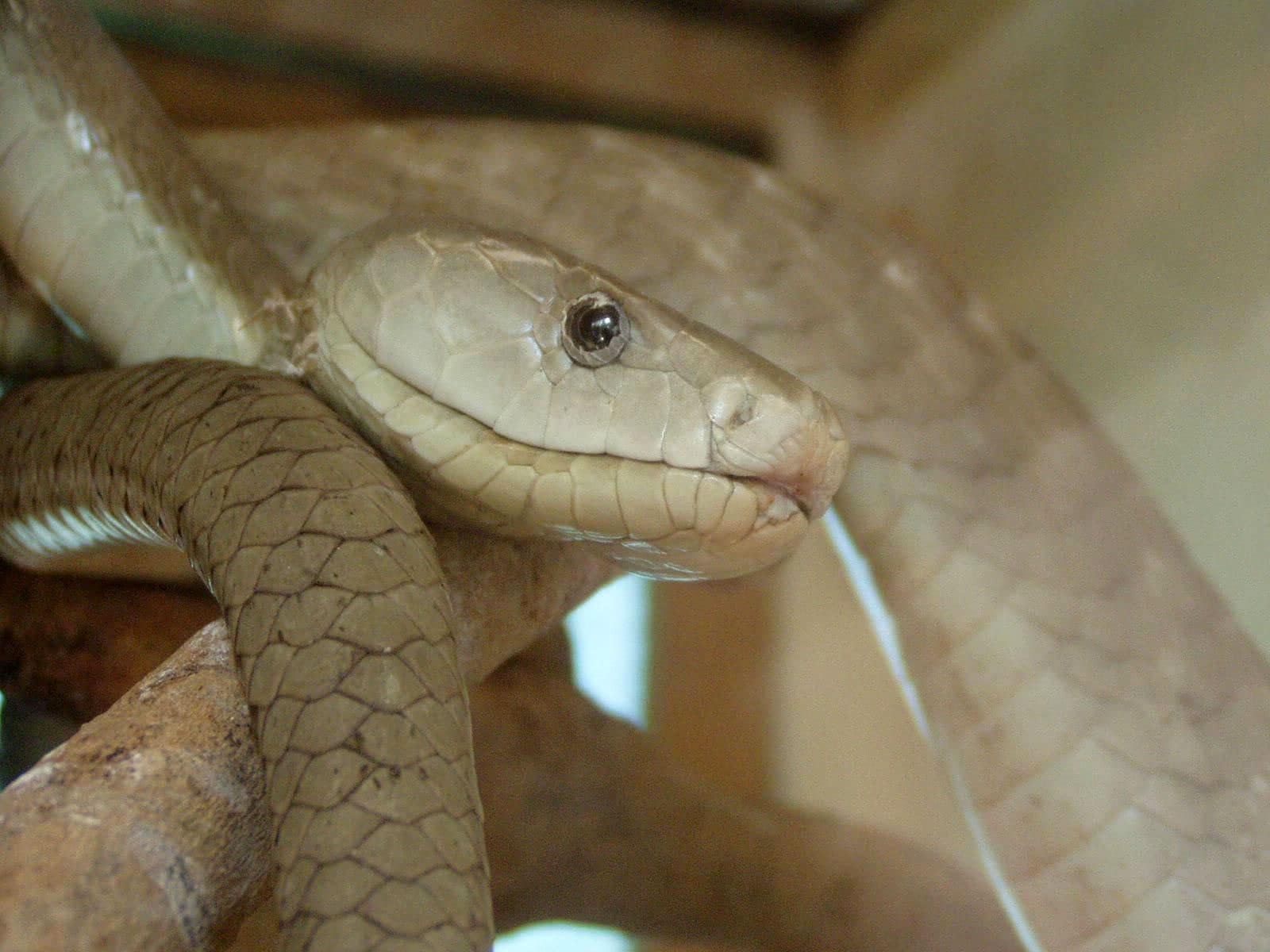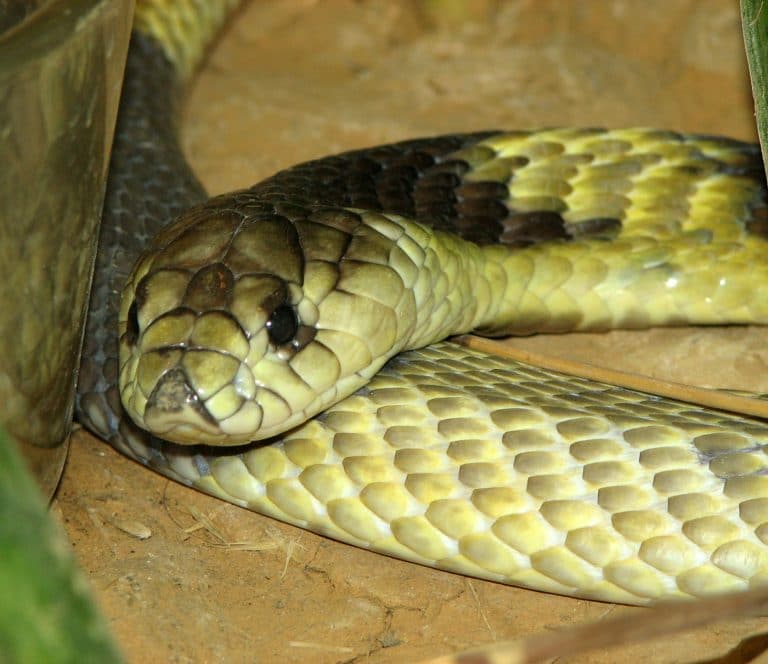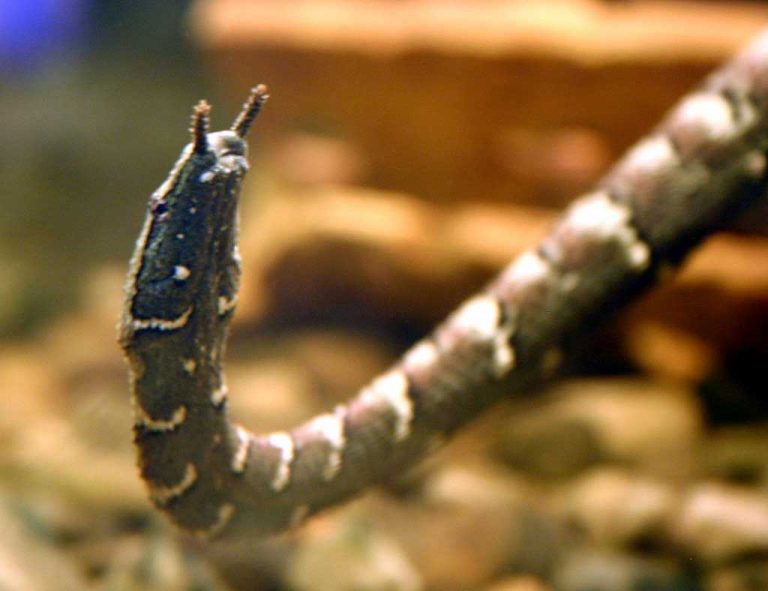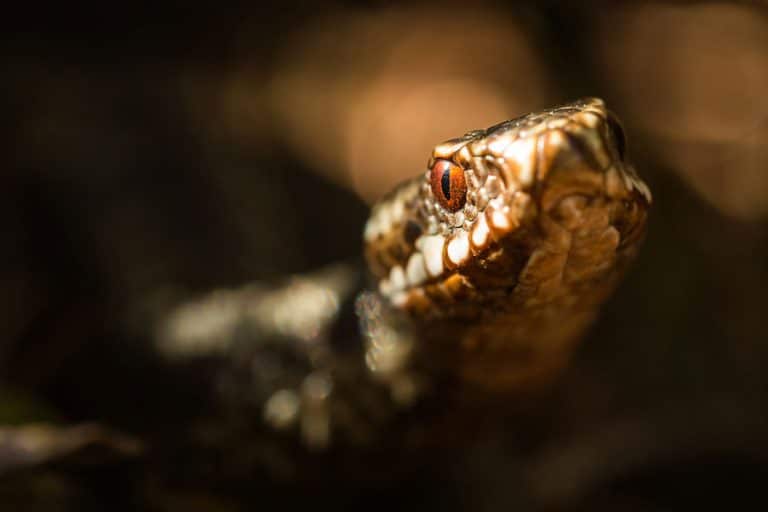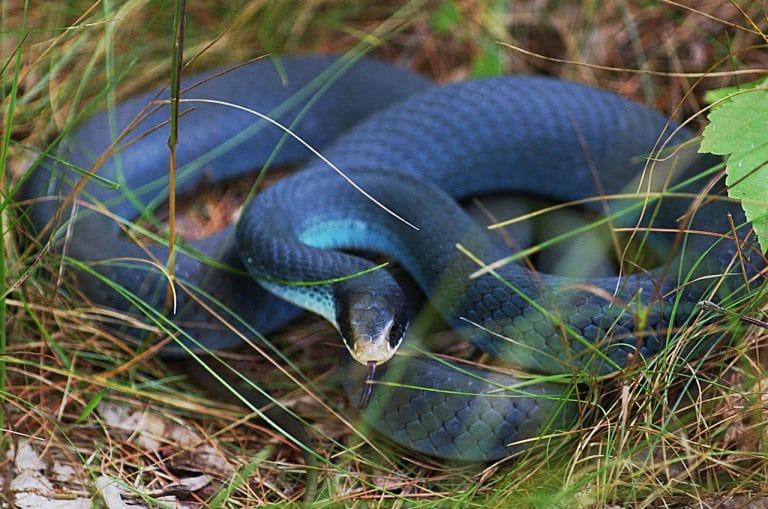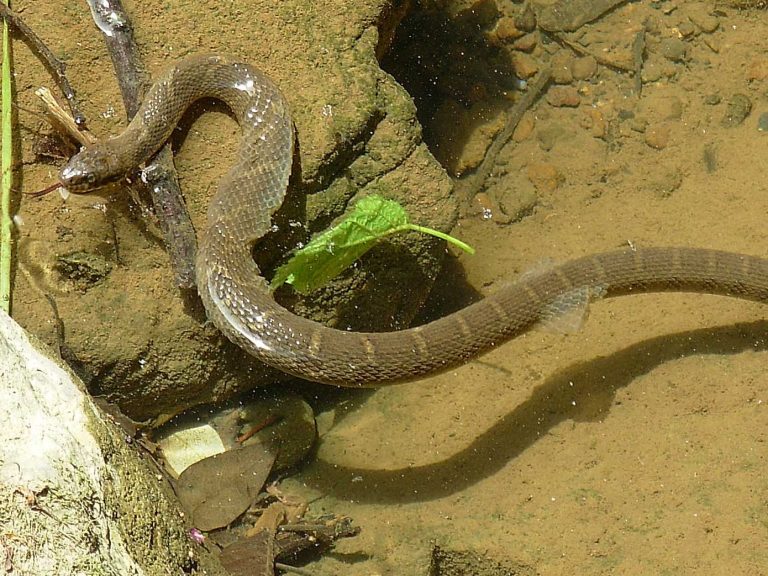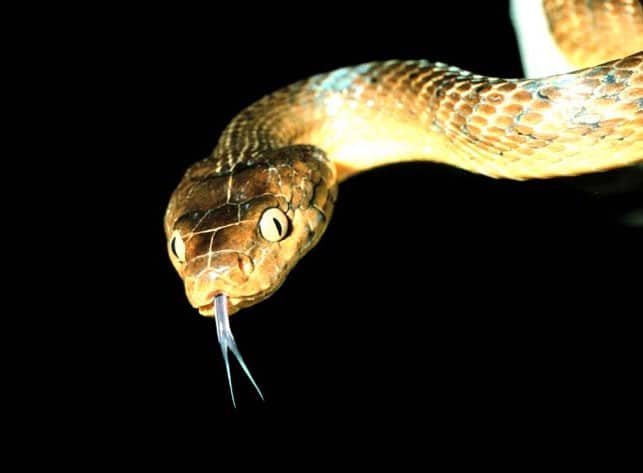Black Mamba Snake
Scientific Classification
| Kingdom: | Animalia |
| Phylum: | Chordata |
| Subphylum: | Vertebrata |
| Class: | Reptilia |
| Order: | Squamata |
| Family: | Elapidae |
| Subfamily: | Elapinae |
| Genus: | Dendroaspis |
| Species: | D. Polylepis |
| Binomial name: | Dendroaspis Polylepis |
The black mamba snake (Dendroapis Polylepis) also commonly known as the common black mamba or the black-mouthed mamba is a very highly venomous snake. They say that it is the longest species of venomous snake in Africa and the second-longest species of venomous snake in the world, second only to the King Cobra. It is also considered the fastest-moving snake in Africa and also that on the planet because it can move at a speed of around 11km/h which is 6.8 mph over a distance of 43m (141ft). The black mamba venom is highly toxic.
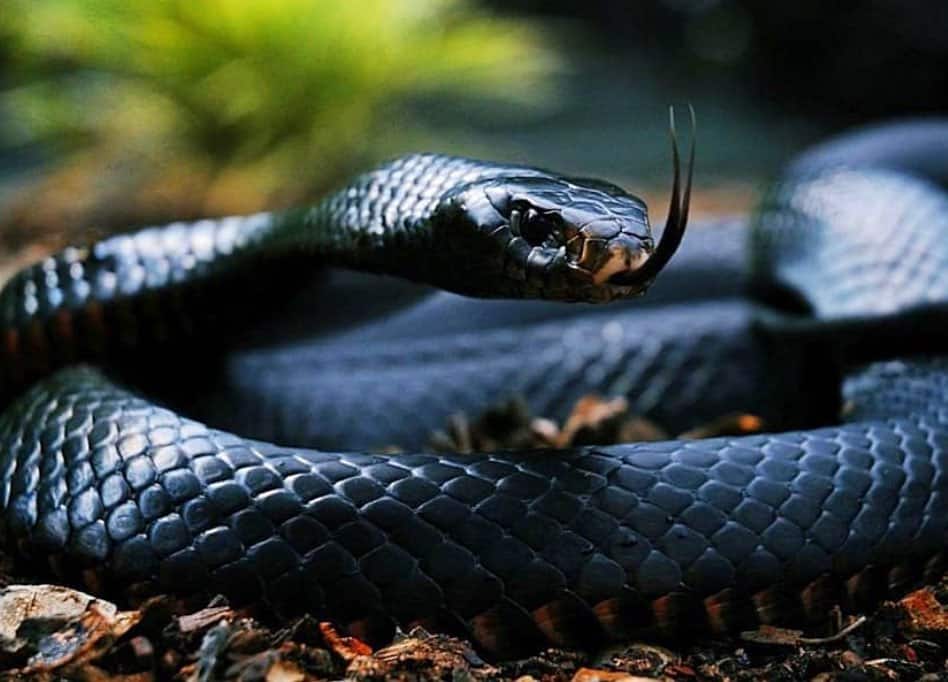
The Black Mamba Venom
Many other poisonous snakes like the Inland Taipan, for example, have more toxic venom, but they say that the Black Mamba Venom is very fast acting and can kill an adult human being in 20 minutes or even less. Medical records have documented two such cases, where respiratory paralysis set in within 10 minutes of the Mamba snake bite and death 10 minutes later. Depending on the nature, place and severity of the bite, death from a Black Mamba bite could follow in 20 minutes to 8 hours, and God help you if you do not gain access to the anti-venom in time.
Anatomy
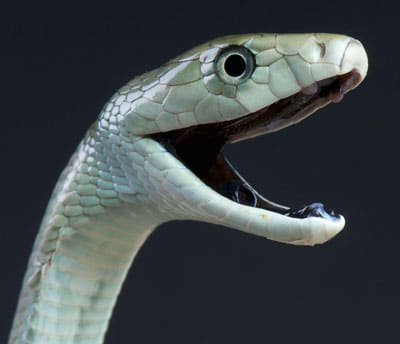
The black mamba’s skin color is usually olive, brownish, gray or at times khaki. The snake’s average length is 2.5 meters (8.2ft), but some species can reach a length of around 4.3 to 4.5 meters (14 to 15feet) as well, which is really a very scary sight. A black mamba can weigh around 1.6 kilograms or about 3.5lbs, on an average. All these details make it evident as to why this snake is the second longest snake in the world, exceeded by the King Cobra. A black mamba can live for up to 11 years and it gets its name from the black color of its mouth’s interior.
Behavior
These black mambas use their speed, not to hunt for their prey, but to run from their predators to save themselves from harm. Such snakes usually acquire a speed of 20kms/h, while travelling with one third of its body up above the ground level. While travelling for long miles, these snakes can move at speeds of around 11-19 kilometers an hour and while travelling for shorter distances, it can move at a speed approx. 16-20 kilometers for an hour and even 23 kilometers, which is why it has the reputation as fastest snake on land. The Black mamba is very shy and secretive and its first instinct, when threatened, is to escape. But in cases, when they are cornered, they tend to mimic the cobra by spreading its neck, opening its black colored mouth and hissing repeatedly. But if the mamba is unable to escape after such an endeavor, it will strike back and do so until its predator is vanquished. Although the very scientific name suggests that they are tree climbers, in reality a black mamba is not much of an arboreal snake. They are usually diurnal.
Habitat
You find the black mamba in the African countries like the Northeast Democratic Republic of Congo, Sudan, Somalia, Eastern part of Uganda, Burundi, Rwanda, Ethopia, Kenya, Eritrea, Tanzania; southwards to Swaziland, Zambia, Malawi, Botswana, Mozambique and KwaZulu-Natal, Botswana in South Africa or Namibia; northeast side, through Angola to southeastern part Zaire.
As a Pet
Breeding
The male black mamba fight for dominance throughout the entire mating season. The females usually lay about 6-17 eggs in burrows, tree hollows or termite mounds. The young hatchlings are about 15-24 inches long and grow up very fast. The healthy juveniles can even reach about 6 feet within the first year after their birth.
Housing
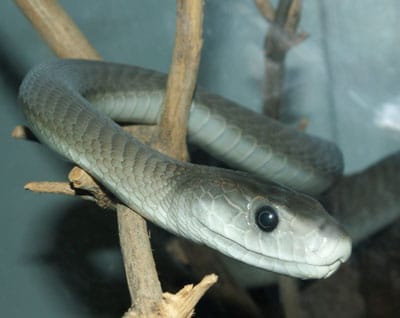
Caging is possibly the most important aspect to consider seriously when you attempt to pet such a species. They require large areas and extremely roomy spaces for their movements and growth. Vision cages are preferable, but there still exist some other options, of which you need to research a bit. Trap boxes are absolute essentials. These come really handy, because firstly, this will act as the hideout for the reptile, when it needs to hide, and secondly, you might trap the snake on days when it is acting out. There are few trap boxes available in the markets, but people tend to make their own trap boxes as and according to the requirement of their pets.
You must provide a large and clean water bowl. This will serve two purposes. One, it will let the snake drink from it and on the other hand, it will make sure that the snake is able to soak itself when it feels like. So the bowl must be big enough. Once you make sure that the temperature of the cage is relatively high and the snake has much water to hydrate itself. It will lead a healthy life.
Food
Feeding is not a problem when it comes to the black mambas. They can live on small mammals, birds, rats, squirrel, mice, bush babies and very many other things. There have been stories about fresh imports of these snakes who were feeding on their first meal within hours of their arrival. So you need not be worried that much about feeding. A mamba finds no problem to gulp down a parrot or even a full grown forest cobra. For larger animals, it will strike them and release them, only to stalk these animals until paralyze and fall. But, with smaller animals, it will strike them and then hold on to them until they paralyze them. Their flexible jaws make it too simple for them to swallow the entire animal.
Handling
Some specimen will be really calm and quite and easy to handle. But these will strike only when agitated, which any animal would do. But there have been reports of some specimen, which were very jumpy and had exploded with such a force that was not encountered by any man. Patience is the key to handling them and it is very important that you take good protection while handling your pet. They are dear to you, no doubt, but they still have venom that might do much harm to you.

Having discovered a fondness for insects while pursuing her degree in Biology, Randi Jones was quite bugged to know that people usually dismissed these little creatures as “creepy-crawlies”.

